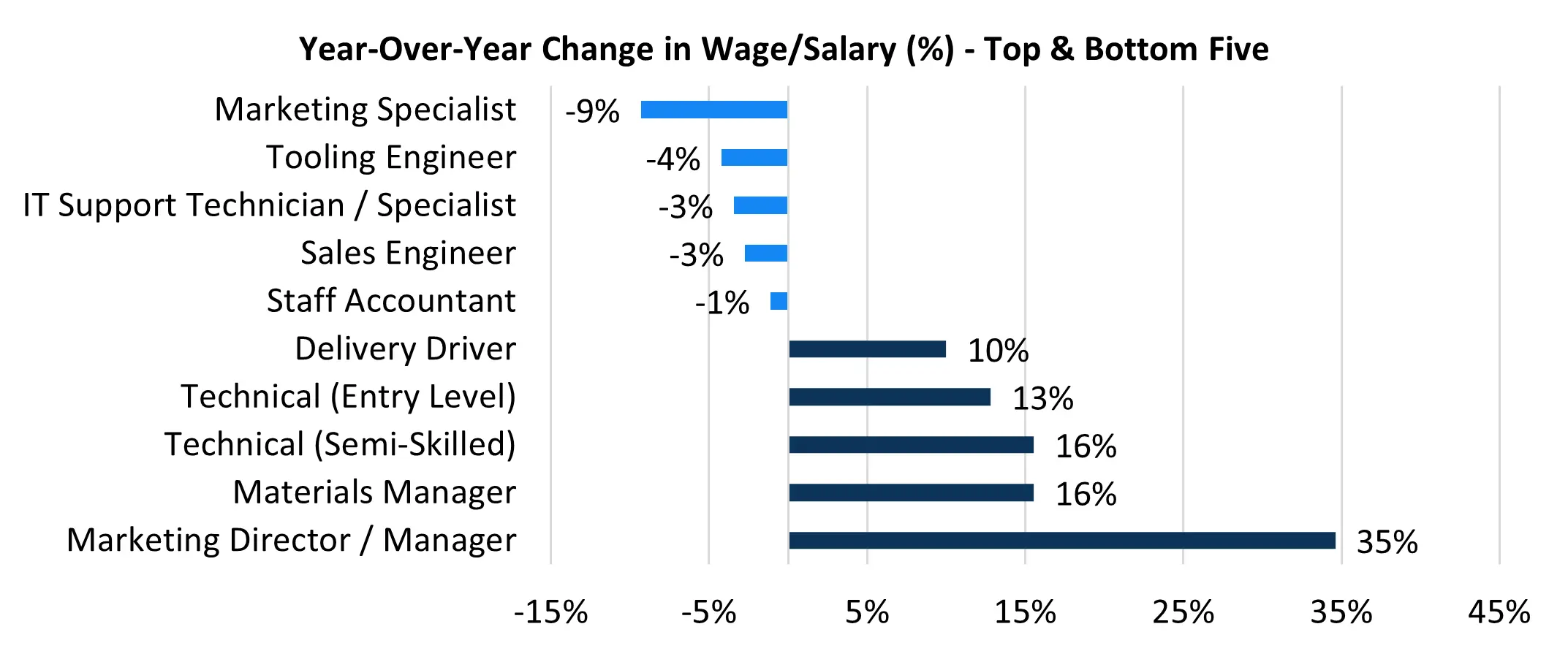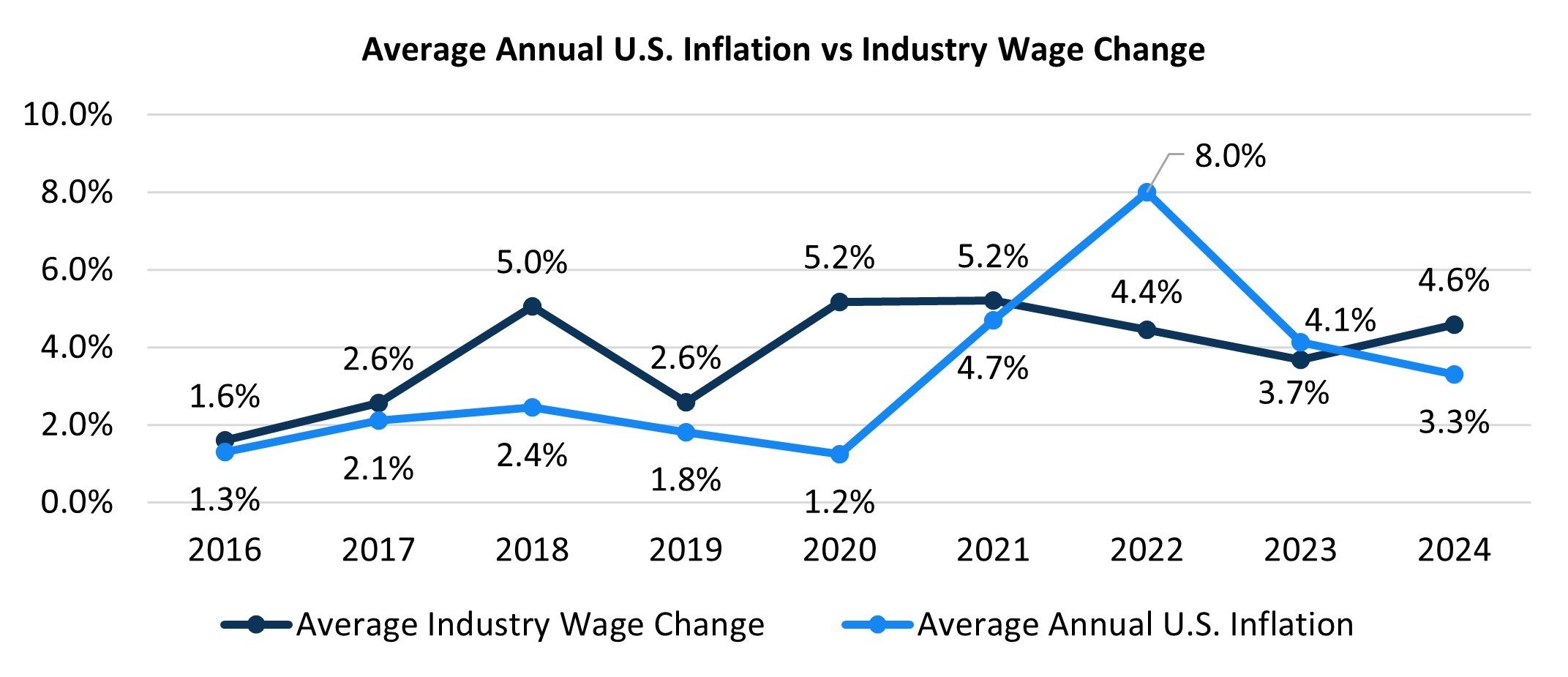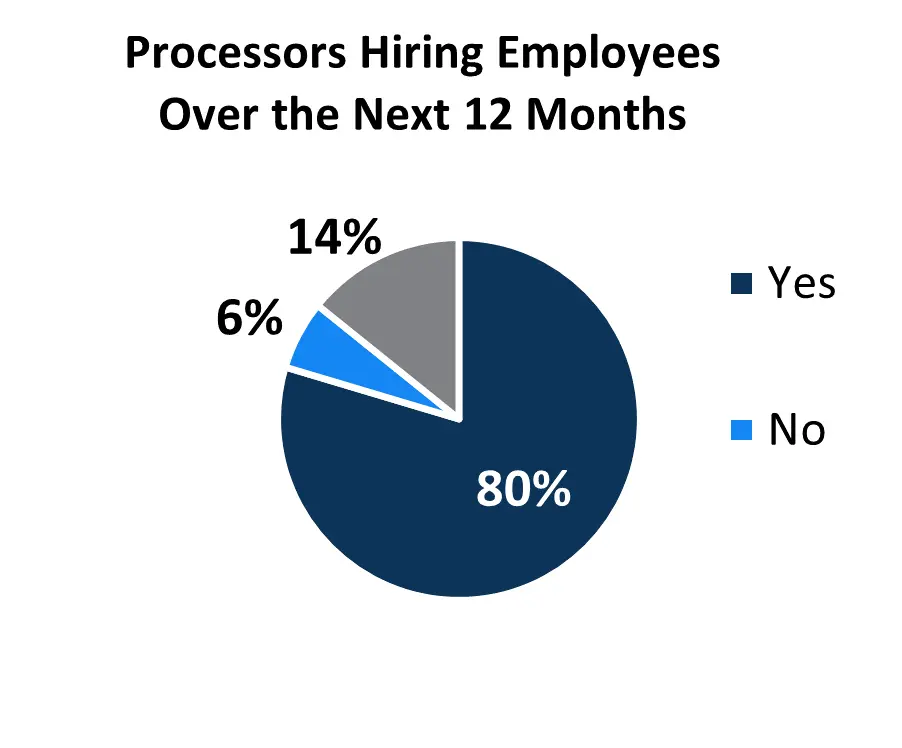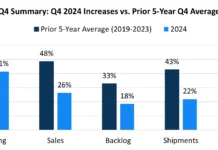By Andrew Carlsgaard, analytics director, MAPP
The 2024 MAPP Wage and Salary Report continues to reflect the impact of heightened inflation on wages and salaries across the US workforce. The survey results of 211 plastics processors representing over 35,000 employees show an increasingly prevalent upward trend, as 57 of the 70 industry job categories (81%) tracked year-over-year have reported increases from 2023 to 2024. These increases primarily are due to the extreme inflation experienced in the previous three years and higher than average current-year inflation.
Fortunately, the elevated demand for workers in manufacturing from 2020 to 2022 has declined somewhat in 2023 and 2024. The US Bureau of Labor Statistics 1-2 reported that workforce participation and unemployment gradually have rebounded to pre-pandemic levels. While low unemployment, plentiful job openings and lower participation had created a favorable market for workers in the past few years, gradually decreasing inflation and heightened economic uncertainty in 2023 and 2024 have slowed this trend over the past three years compared to levels seen in 2020 and 2021. Those three factors are not as significant contributors to wage increases in 2024, compared to current-year inflation combined with catch-up from the previous three years’ cumulative inflation.
The MAPP 2024 Wage and Salary Report reveals significant trends in specific roles across the manufacturing industry (Chart 1). The average increase year-over-year for the 57 positions that experienced increases was approximately 6.1%, up from 5.7% in the 2023 report. The remaining 13 positions decreased or stayed the same in median salary, averaging around 1.9% lower in 2024 (3.5% lower in 2023). Notably, the most substantial salary increases were for marketing directors or managers (35% increase – however, with a relatively low sample size this year), materials managers (16% increase) and semi-skilled technicians (16% increase).

Conversely, the most substantial median wage decreases were for marketing specialists (9% decrease), tooling engineers (6% decrease), IT support technicians/specialists (5% decrease), continuous improvement managers and directors (5% decrease) and information systems managers (5% decrease). This data suggests somewhat of a reversal of a 2023 trend where white-collar positions that were not directly involved in the plant’s day-to-day operations most often saw declines year-over-year compared to those closer to operations or engineering.
Although the average yearly wages for all tracked positions have risen in 2024 compared to 2023, much of this increase can be attributed to inflation. This is especially relevant given the extraordinary inflation rate of 8.0% in 2022, which significantly outpaced wage growth that year. As a result, wages are still playing catch-up with the high inflation levels from that periodv (Chart 2). The consumer price index 2 (the primary measure tracked by the US Bureau of Labor Statistics to measure year-over-year price inflation) started to surge in early 2021 and peaked in June 2022 at around 9.1%. However, the rate fell to a three-year low of 3.0% as of June 2023 and has remained in the 3-4% range over the past year – though, for context, this is twice as high compared to average pre-pandemic rates (an average of 1.8% in 2019). The average yearly inflation for 2024 (through May) is 3.3%, while the median wage growth from the prior year for all positions tracked in the 2024 Wage and Salary Report was 4.6%.

While that percentage wage increase is nearly a percentage point (0.9%) higher than the prior year (3.7% in 2023), inflation catch-up from 2022 likely is the driving factor for the general increase, as workers seek raises or higher salaries elsewhere to offset the massive 8.0% increase in prices of goods and services in 2022. Additionally, this wage increase is still lower than wage increase data tracked by the US Federal Reserve 3, which reports yearly wage increases of 5.1% for US manufacturing jobs and 5.4% overall for US jobs.
With these elevated year-over-year wage increases, processors report softer hiring demand overall than the prior two years. In the MAPP 2022 Wage and Salary Report, 92% of processors said they would be hiring new employees over the next 12 months, but this dropped to 87% in 2023 and now sits at 80% as of the publishing of the 2024 report (Chart 3). This decrease in demand for labor is a result of both economic uncertainty and government intervention to curb consumer demand. These factors have influenced manufacturers’ profitability and capacity utilization, forcing them to cut costs and postpone investments.

While the survey results may be unfavorable to the employers’ bottom line, the wage and salary increases observed in the 2024 report are unsurprising, given the current state of the economy and inflationary pressures. For manufacturing organizations facing external strains on their bottom line in other areas (such as heightened energy and raw-material costs), hiring new or backfilled roles slower than in the previous few years or maintaining a consistent level of employment may become necessary to maintain profitability while preventing any future reductions in force in the near term. If economic conditions remain favorable for workers, there will continue to be some degree of upward movement in wages.
However, lower inflation ultimately will be vital to curbing these upward yearly wage trends that have become common since 2020. Likewise, if the labor market shifts more favorably toward employers in a recession, processors need to adjust only to the current market if it fits the current needs of their business.
As a best practice, leaders carefully should examine the results of each position in the 2024 Wage and Salary Report and adjust wages where appropriate to reflect industry averages for organizations of the same size or location to remain competitive in the labor market – by not correctly addressing wages, organizations risk losing valuable internal resources and incurring additional costs to replace departed employees. Additionally, knowing the going rate for those positions is imperative to attracting and retaining the talent to keep operations steady in an uncertain economy.
The entirety of MAPP’s 2024 Wage and Salary Report can be purchased from the MAPP website at www.mappinc.com/resources/benchmarking.
References
1., 2. U.S. Bureau of Labor Statistics –
https://www.bls.gov/data/apps.htm
3. Federal Reserve Bank of Atlanta –
https://www.atlantafed.org/chcs/wage-growth-tracker




